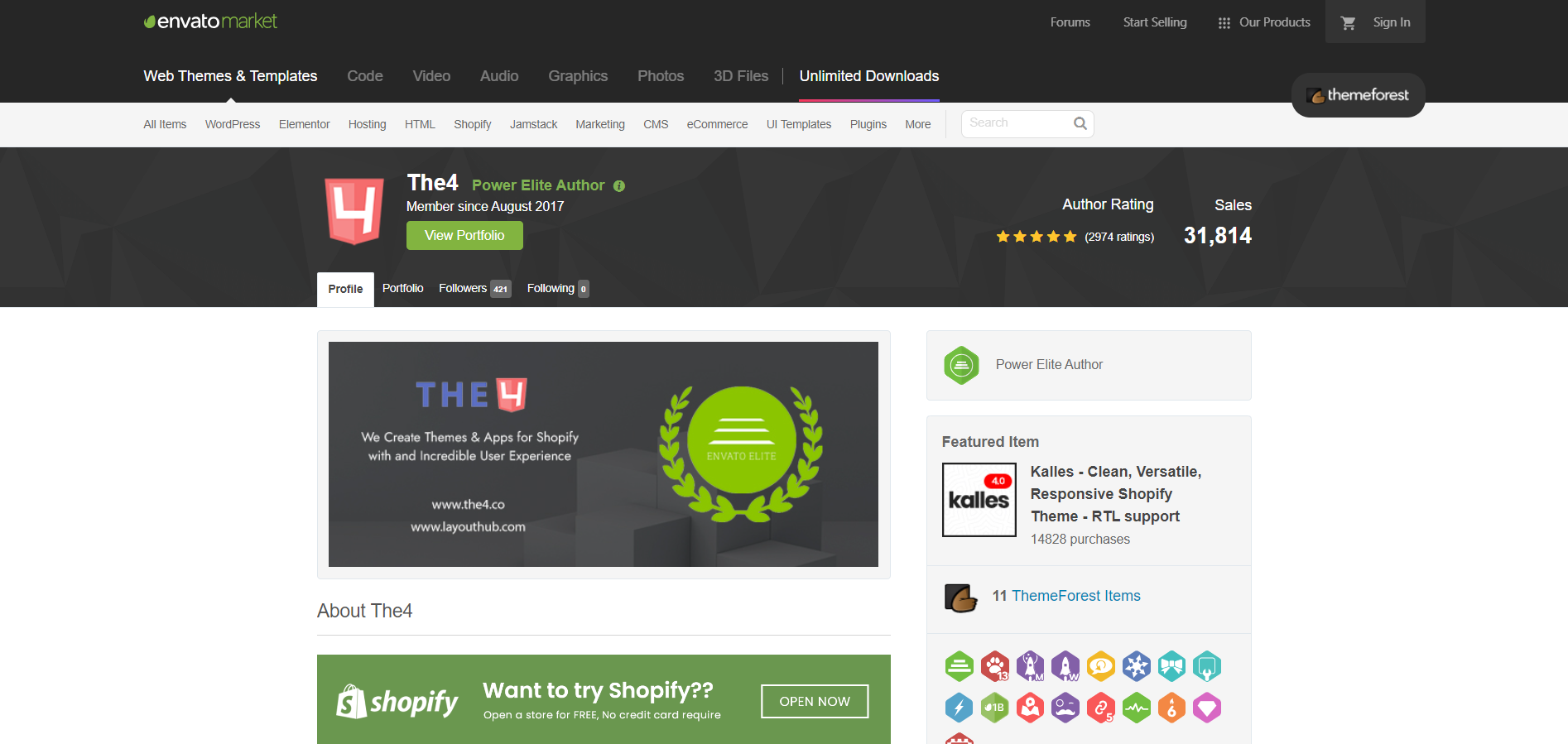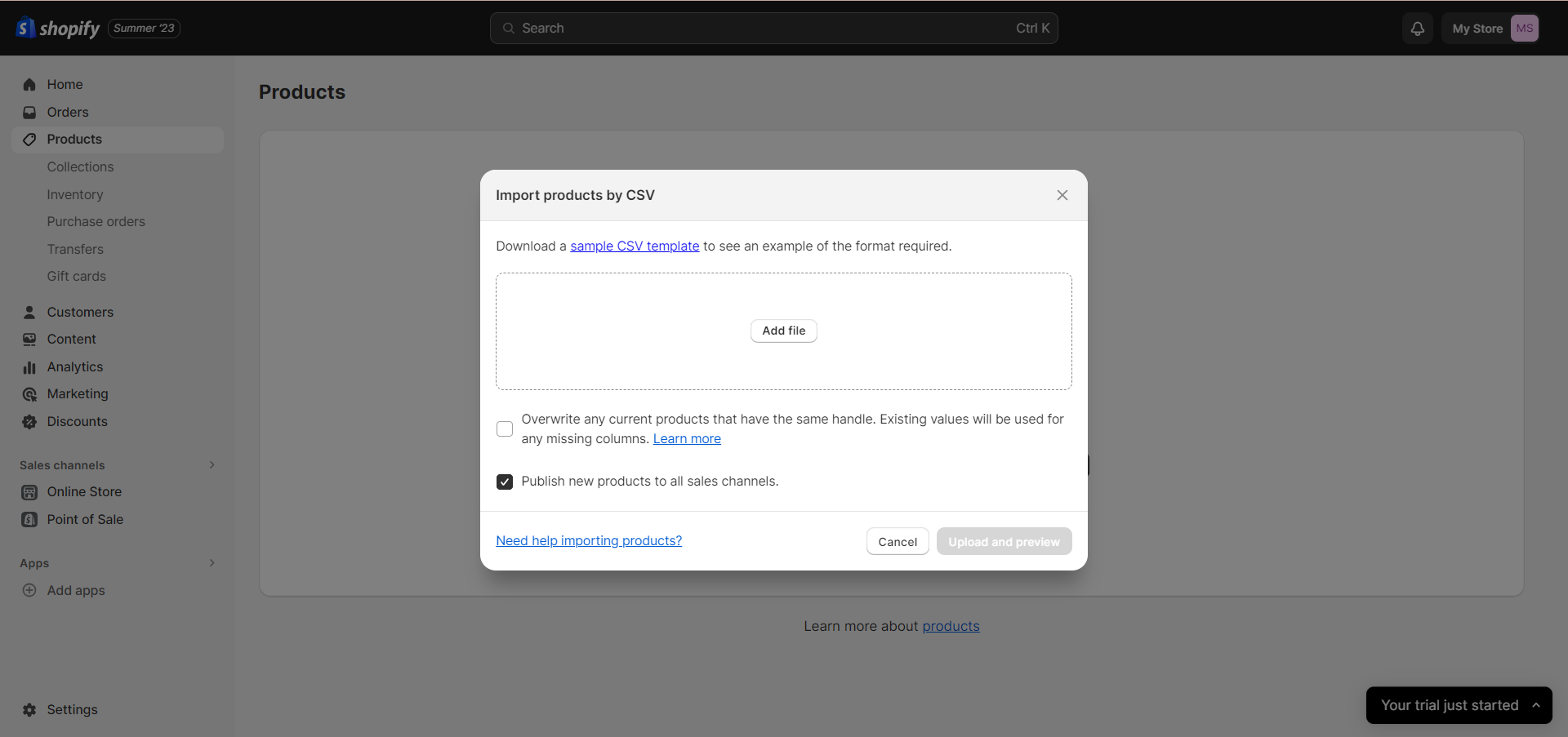Shopify Launch Checklist: 7-Step Website Checklist

Today, many merchants start their business through e-commerce. Shopify is one of the most popular e-commerce platforms, easy to customize, and has a user-friendly approach. However, launching a new online store is not accessible if you are new to e-commerce. That's why we're here with this blog, "Shopify Launch Checklist: Your Expert for a Successful Begin," to guide you step-by-step through launching an online store on Shopify, from the preparation stage to the post-debut activities.
By following our launch strategy, you can ensure that your store is set up with the necessary features and functionality, helping you avoid missing any crucial steps in the launch process. And then, you can launch your Shopify store with confidence and increase your chances of a successful launch.
Shopify Website Launch Checklist
Step 1: Pre-Launch Preparations
First, you have to prepare carefully before launching your online store. The first step helps you define your online store and launch it confidently. That includes the following:
Researching the target audiences
Researching your target audiences is a crucial step for any merchant who wants to align their messaging with the audience’s needs, pain points, and goals.
After identifying the ideal customer profile to buy your product, you should gather insights from your target audience. One of the best ways is to ask them directly. Some tools you can use to create and distribute surveys:
- SurveyMonkey
- Typeform
- Calendly
Surveys and interviews can help you understand their preferences, expectations, and objections. You can also use social media platforms like Twitter, Facebook, or LinkedIn to interact directly with your audience and get to know them better.

By understanding who you are selling to, what they care about, and how they make decisions, you can craft more effective and personalized pitches, proposals, and follow-ups.
Adding sales channels
Shopify is one of the best eCommerce platforms to build your online store, but there are others you can approach your audience. If you don’t have a Shopify account, create one to start the free trial. You have to identify which channels have comprehensive coverage to increase your ability to reach potential customers. Some other sales platforms that you can refer to:
- Amazon
- eBay
- Google Shopping
- Youtube
- Facebook and Instagram
- Tiktokshop
You can choose the social media and marketplace sales channels that will work best for your brand, then add the available integrations into the Shopify dashboard. These channels connect with Shopify, so you can easily keep track of orders, inventory, and customers across platforms.
Analyzing Competitors
Nowadays, eCommerce means cutthroat competition. That’s why you have to keep tabs on your competitors regularly. You should choose competitors offering the same type of service or product as your business to determine their budget, size, or business strategies. Here are some ways you can identify your competitors:
- Google the keywords and terms that your potential customers would use when searching for your products and check out the pages (especially the ones that have the highest ranking on Google)
- Use Shopify or other e-commerce platforms like Amazon as a database of businesses offering the same or similar products and services to yours.
After finding out who your competitors are, dig into their details.
- Use tools like Similar Web, Moz, SEMrush, etc., to research their marketing strategies, content strategy, quality, reach, etc.
- Conduct a SWOT analysis of your competitors.
- Dig more through social media and find out more about the way your competitors are positioning and branding themselves.
You can create a list on a spreadsheet that includes the basic information about each competitor and details of their business (their budget, prices, strategy, quality, reach, etc.) Gathering as much (relevant) information as possible about your competition leads to understanding where your business stands against them.
This first step doesn't just give an edge to an eCommerce business. It is a must-do to build the foundation for the eCommerce race and constantly profit from your company.
Step 2: Store Setup and Configuration
Your online store is more than just a website. It represents the essence of your brand. That means you have to create a custom domain for your e-commerce site and customize your store on Shopify in this step.
Create a custom domain.
You can start this step by choosing a domain name that resonates with your brand's values and vision. The domain name should be short and impressive to boost brand recognition and make it easier for customers to find the store through your URL.
You can use Shopify’s free domain name generator to choose a relevant yet unique store name to distinguish your online business from competitors.

When you start a Shopify free trial, you are given a ‘“myshopify.com’” URL for your store. But if you want to customize your domain name, you have to purchase one. Shopify offers domain name registration, and you can purchase a domain name through Shopify or a third-party provider for $14 a year and cancel anytime you want.
Go to the Shopify admin panel > Online Store > Domains to connect a domain name to your Shopify store. Click Connect Existing Domain and follow the prompts to connect your domain to your store. Don’t forget to set up your domain settings with your primary domain, configure SSL, and set up a subdomain (if needed).
After all, you will need to verify your domain ownership to ensure that you are the rightful owner of the domain. Shopify provides instructions on how to verify ownership of your domain through your domain provider.
You can also add a domain to Shopify in some other way here.
Related articles you may like:
Customize the online store.
Customizing your Shopify store is essential in creating a visually appealing and user-friendly online store. A website with detailed and well-written content will significantly improve customer trust, so you must build it well. Even if you don't have much time, make sure to include all of these standard pages in your Shopify site before launching:
- Homepage
- Contact page
- About page
- Frequently Asked Questions (FAQ) page
- Shipping and returns policy page
- Terms and conditions and privacy policy pages
Shopify offers customizable themes, each with its unique design and layout. Besides, you can explore more themes on The 4 or use some page builder apps like EComposer for the Shopify storefront. The 4, with a wide range of themes sold on ThemeForest, will help you quickly customize an online store website. You can try Kalles, Unsen, and Gecko, which most sell. Or, for more flexibility, use the EComposer Page Builder app to make any page type easily. They will be great helpers to make building standard pages no longer difficult.


When choosing a theme, consider your brand’s personality and target audience. Customize a visually appealing website that can impress your audience at first sight, with a layout that showcases your products effectively.
Step 3: Creating A Product Catalog and Setting Up Collections
After customizing your online store, it's time to add products and set up collections. Your store should be set up in a way that makes sense to your customers and help them easier to find products. To create a product catalog, you need to add products to Shopify first. You can add products manually or use a CSV file.
- Adding products manually is better if your business has a small number of SKUs and you want more control over the product information displayed on your storefront. On the Shopify admin, click Products > Add your products, then Upload them after reviewing their details.

- Importing products into your Shopify store using a comma-separated values (CSV) file is useful when your business has a lot of SKUs to add and you want to make any changes to your products or inventory. From your Shopify admin, go to Products > Import > Add file, select the CSV file you want to import, click Upload and continue to review details, and then click Import products.

Once you've added several products, click Collection to create a collection from your available products. Collections are essentially groups of products that are organized by category or theme. Organizing your products into collections makes it easier for customers to find what they're looking for, and it also makes it easier for you to manage your inventory.
When setting up your collections, give each collection a clear and descriptive name, and ensure each product is assigned to the appropriate collection. You can also add images and descriptions to your collections to help make them more seemingly appealing. Ensuring that all information you provide is accurate and up-to-date for the customers is vital.

*Note: To take user experience a step further in creating a stunning pages, we recommend using Nitro Lookbook app. This app allows you to display optimized images in engaging lookbook and shoppable galleries to showcase products in your pages.
With Nitro Lookbook, it encourages customers to spend more time browsing, making exploration intuitive and enjoyable. Fully customizable and easy to navigate, it helps create a seamless browsing experience that invites customers to explore your products, boosting both satisfaction and conversions.
Step 4: Payment Gateway and Shipping Setup
In this step, you should set up your payment gateway and shipping options so customers can complete transactions and receive their purchases. You should choose the appropriate payment gateway and shipping methods that align with your business needs and customer preferences.
Payment Gateway
Payment gateways allow to pay for their orders securely and conveniently. Shopify offers more than 100 payment gateways, including:
To set up payment gateways in your Shopify store, you must first access your Shopify admin panel and navigate to Settings. From there, select Payment Providers and choose the payment gateway you want to use.

Shopify Payments is the simplest and most straightforward way to begin accepting payments through your Shopify store. You can find out how to set up Shopify Payment here.
If you choose a third-party payment gateway such as PayPal or Stripe, you must create an account with that provider and connect your account details to your Shopify admin panel. Once set up, customers can choose their preferred payment method at checkout, and you will receive the funds directly into your chosen account.
NOTE: Different payment gateways may have different transaction fees and processing times, so you should research before making a final decision.
Shipping Setup
This is also a crucial element when considering the Shopify launch checklist. First, you’ll need to determine what shipping options you want to offer your customers. This may include standard, expedited, or free shipping for orders over a certain amount.
Next, you'll need to set up shipping zones based on the locations you can ship to. Shopify offers a variety of tools to help you create regions and shipping fees. Shipping costs also depend on the customer's location, the weight, and the size of their order.
To set up your store's shipping options and methods, log into Shopify's admin page, and select Settings > Shipping and Delivery. Then, you can easily configure shipping costs, regions, and procedures to ensure a seamless shopping experience for your customers.

In addition to shipping options and regions, you also need to consider the packaging and handling of your product, as this can affect the shipping fees you charge. You may need to invest in shipping materials, such as boxes or envelopes, and account for the time it takes to pack and prepare your order for shipping.
Step 5: SEO and Marketing Preparations
SEO and marketing are essential parts of your launch strategy. Optimize product descriptions, titles, and meta details to boost search visibility. Begin crafting a pre-launch marketing strategy that involves social media teasers and email campaigns to create buzz.
Search Engine Optimization (SEO) strategy
It is essential to optimize search engines because customers often search for products on Google. Therefore, improving search rankings on Google will effectively attract more visitors to your store and increase sales. You should set up SEO features like meta titles and descriptions and optimize your product descriptions with relevant keywords and informative content.
Here are some tips to help you with Shopify SEO:
- Use Shopify’s SEO features: Use Shopify’s built-in SEO features like URL redirects, canonical tags, and meta tags
- Use unique meta titles and descriptions for each page on your store. Make sure they include relevant keywords.
- Use relevant keywords: Research keywords that are relevant to your products and use them in your product titles, descriptions, and tags.
- Use descriptive and unique product titles, optimize product descriptions, and use high-quality product images.

Marketing Preparation
Integrating Social Media And Email Marketing Tools can help you reach a wider audience and drive more traffic to your Shopify store:
- Connect your social media accounts to your Shopify store: This will allow you to promote your products and content on social media and make it easier for customers to share your products with their own followers.
- Use social media marketing tools to create and manage ads: You can run ads about your store's campaigns and events on social media platforms like Facebook, Instagram, and TikTok. This will help you target specific audiences and drive more traffic to your store.
Shopify also provides a convenient built-in email system that enables you to send automated emails and SMS. With email marketing, you can also promote your store's campaigns, events, or sales to your customers. Some other email marketing platforms offer marketing capabilities and the ability to send manual:
- Avada Email Marketing & SMS
- Mailchimp
- Klaviyo
Step 6: Launch Day Strategies
The final pre-launch of your Shopify store is to ensure everything is in place before going live. Just give everything a final once-over to check for errors.
- Finalize and test your website: Ensure all website content is complete and error-free. Check for typos, grammar, and links in web page content. Test your website’s checkout process from start to finish to ensure everything works correctly. Ensure your customers can easily add products to their cart, view their cart, and complete their purchases without any issues.
- Set up your website’s marketing and analytics tools: You can monitor your store's performance using Shopify's analytics tools. In addition, other devices can track and analyze your website to gather and showcase customer reviews and feedback, such as Google Analytics, Meta Pixel, and email marketing software. These tools will help you monitor the performance of your website and optimize your marketing efforts.

After completing the above steps, you are ready to launch your website. Make a final check to ensure everything is in place, and then make your website live. Build excitement by teasing your launch on social media platforms. Prepare engaging content to introduce your brand.
By executing well-planned strategies, you ensure your launch day resonates with your audience, driving curiosity and building a solid foundation for your store's future success.
Step 7: Post-Launch Activities
Your store is live, but the journey continues. After the launch, you need to cover the essential steps you need to take to ensure the ongoing of your online store.
- Monitor your website analytics to understand customers' behavior and see how your website performs. Check your website’s loading speed, user experience, and other performance metrics to fix any issues and optimize accordingly to ensure your store runs smoothly.
- Update your website content and product offerings: To keep your store trendy, update your website content regularly and add new products to your store's offerings. This will keep your customers engaged and coming back for more.
- Develop the marketing plan: Marketing your store is essential to drive traffic and sales. Develop a marketing plan that includes SEO, advertising, social media, email marketing, and other strategies to promote your store and reach your target audience.
- Maintain and improve product quality: In addition to website development strategies, you should maintain good product quality. It is one of the critical reasons customers return to the store and buy more products.
The launch is just the beginning – sustaining customer interest and satisfaction is vital. By staying active and responsive, you ensure your store thrives in the competitive e-commerce landscape, creating a lasting impact beyond the initial launch excitement.
Start Your Shopify Journey Today!
Launching a Shopify store requires careful planning and attention to detail. Following our Shopify launch checklist ensures your store is optimized for success and ready to welcome customers. It’s time to launch your e-commerce website and brand to the masses!
It’s essential to test your store thoroughly, optimize for SEO, integrate social media and email marketing tools, and continuously monitor analytics to make data-driven decisions. Launching a store is just the beginning of your eCommerce journey, and continuous improvement is necessary to thrive in a competitive market.
🎁 Exclusive Deals for The4 Customers

EcomRise Post Purchase Upsell
EcomRise Post Purchase Upsell helps merchants boost revenue by offering targeted upsell and cross-sell offers after checkout.
- ✅ Show post purchase upsell offers immediately after checkout
- ✅ Display thank you page upsell offer with discount
- ✅ Track upsell performance easily with GA4 integration

🎉 EComposer – Free 6-Month Plan
Build landing pages, sales funnels, and more with drag & drop.
The4 users get 6 months free (save $114).
- ✅ 100+ templates ready to use
- ✅ Build any Shopify page
- ✅ No coding required













No comments